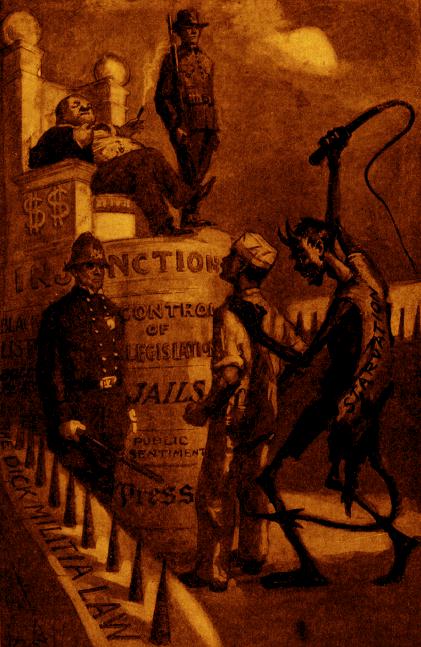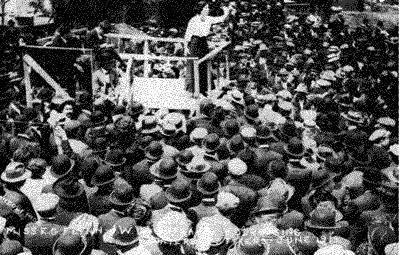

Course Description -- Required Readings -- Grade Requirements -- WEB Reading Schedule -- Course Outline, Coursepack and Book Reading Schedule (from syllabus) -- LabourStart: Where trade unionists start their day on the net; Personal Labor Links -- Requests from class
1. A course Reader and Web-based readings (http://darkwing.uoregon.edu/~dreiling/soc446title.htm). In addition to the 446/ 546 course-pack, graduate students must obtain a second group of readings. ALL course-pack readings will be available in the Reserve section of the library or for purchase at the bookstore.
2. Brecher, Jeremy. 1997/1972. Strike! Boston: South End Press.
3. Delgado, Hector. 1993. New Immigrants, Old Unions: Organizing Undocumented Workers in Los Angeles. Philadelphia: Temple University Press.
4. Juravich & Bronfenbrenner. 1999. Ravenswood: Steelworkers Victory and the Revival of American Labor.
5. Barbara Kingsolver. 1989. Holding the Line : women in the great Arizona mine strike of 1983. Ithaca, NY: ILR Press.
1.Kimeldorf, Howard. 1999. Battling for American Labor: Wobblies, Craft Workers and the Making of the Union Movement. Berkeley: University of California Press. 0520218337
RECOMMENDED: Fantasia, Rick. 1988. Cultures of Solidarity: Consciousness, Action and Contemporary American Workers. Berkeley: University of California Press.
My intention is to create an environment where all seminar participants take an active part in the evolution of our consciousness as a class. Maintaining a common ground in the course readings will help us toward that end. I encourage you to complete the readings as they are listed in the reading outline below and please do your best to complete the assigned section before the respective lecture times. My lectures will stay close to the reading, making it much easier for you to identify key concepts and problems. In addition, most of the course time will consist of a mixture of lecture and discussion. For this reason, I would like everyone to attend classes regularly.
Below you will find my proposal for evaluating how each of you engage the course material. My intention with this proposal is to provide a framework from which I can assess how much and to what depth each of you pursue the course material. My intention IS NOT to compare, penalize or reward you.
PROPOSAL:
ATTENDANCE: 1% for each day, totaling 20% of your total
course grade
READING SUMMARIES: three summaries of selected weekly readings
(including web-based readings), each at 15%, totaling 45% of your total
course grade. They are due on Tuesday during class (for the prior weeks’
reading). Best to plan ahead, know your limits, and don’t leave all 3 for
the last three weeks! For each review of the readings you may receive
up to 15%, depending on the content, ability to bring synthesis to the
various readings, and the quality of presentation.
FINAL COMPREHENSIVE PROJECT: Choose a strategy to convey
to me your understanding of labor as a social movement as it was derived
from studying the material presented in this class. I encourage you
to discover a strategy that you would enjoy using as a means to present
this material. I will ask for your input during class. This
will account for up to 35% of your total grade.
ALTERNATIVES:
If you find that the above proposal does not meet your needs for this
class and want your grade to reflect some other course-related work, please
plan to present your strategy to me by the end of the second week of class.
The following guidelines are suggested: 1) develop a proposal that outlines
what you will do to convey to me that you engaged the course material/readings,
and second, provide a brief explanation of what needs of yours are met
by doing the work as you propose (e.g., I will enjoy learning sociology
more by applying my artistic talents or web-design talents to course projects);
2) be prepared to explain how each of your proposed projects will show
me that you engaged each major segment of the course material (be aware
that I want to see that your projects are directly related to the course
content). Your proposal may substitute any element of my proposal with
your own or you may want to do things that convey your understanding of
the course material in ways that totally diverge from my proposal above.
These options may be discussed in detail during office hours or in class.
| WEEKLY WEB LINKS & JOURNEYS | |
| WEEK 1
The Question of Class and the Revolutionary Significance of Class Conflict |
1) Marx & Engels (1848) The Communist Manifesto, Part I and STRIKES AND COMBINATIONS OF WORKERS, from Chapter 5, The Poverty of Philosophy (1847) |
| WEEK 2 -- Strategy I
Tensions Between Socialism and Anarchism: Socialism from Above, or Below, or Somewhere Between? |
2) Class Crosscuts Race and Gender:
Lucy Parsons Biography;
May Day 1886 Haymarket
Massacre Internet Memorial
3) End of the Knights of Labor, rank and
file insurgency, and the rise of the AFL;
|
| WEEK 3 -- Strategy II
On Anarchism, Revolutionary Syndicalism, and Socialism: The Theoretical and Political Role of Industrial Unionism |
4) "Mother"
Mary Harris Jones: Now, Emma
Goldman -- What is Anarchism?
5) Elisabeth
Gurley Flynn The Story of the Industrial
Workers of the World
|
| WEEK 4 -- Institutionalizing Industrial Unionism and the Contradictions of Bureaucratic Power | 7) The Great Flint Sitdown |
| WEEKLY WEB READINGS & JOURNEYS | |
| Week 5 -- The Changing Context and Composition of Labor | Working Women Page; Pride at Work, AFL-CIO; CLUW Homepage; Oregon Tradeswomen Network |
| Week 6 -- The Changing Politics and Strategies to meet the needs of workers | Labor Party Home Page; California Nurses Association; Labor Project for Working Families |
| Week 7 -- At the margins of U.S. labor | EXPLORE
Pineros y Campesinos Unidos del Noroeste (PCUN); UFW History and Exhibit of La Causa Home page for the United Farm Workers (UFW); Justice for Janitors |
| Week 8 -- Social Movement Unionism: From the Bottom-UP | Explore Teamsters
for a Democratic Union
Explore 3 cutting-edge unions: UNITE!, United Electrical, Dan LaBotz (author of Rank and File Rebellion) on the UPS Strike. |
| WEEKLY WEB READINGS & JOURNEYS | |
| Week 9 -- National Struggles and Convergences in International Strategy | Explore: The General
Strike Page; the Congress of South
African Trade Unions (COSATU)
or Solidarity with |
| Week 10 -- Between Union Mobilization and a Class for Itself | Wrap-up -- Savvy
Troublemaking, Amy Carroll
CorporateWatch's Global Labor Page (Explore) SWEATSHOP WATCH |
Coursepack readings are numbered. Those followed by a * are from the main packet and those with G are from the graduate supplement. Readings from the Web are highlighted in boldtype and indicated on the course Web-page (http://darkwing.uoregon.edu/~dreiling/soc446title.htm). Author and title indicate scheduled readings from the books.
I) The Sociology of Labor and Class
A) WEEK 1:
1) * Weber, Max. (1921/1958). “Class, Status, Party.”
G1) Przeworski, Adam. 1977. “Proletariat into a Class: The Process of Class Formation from Karl Kautsky’s The Class Struggle to Recent Controversies.” Politics and Society 7(4):343-401.
WEB READINGS: Marx, Karl and F. Engels. 1848. The Manifesto of the Communist Party. And Marx on worker combinations.
BOOK:
Everyone: Intro. and Chapter 1. Brecher, Strike!
II) Class Formation and Class Struggle – Labor as a Movement
A) WEEK 2:
i) Labor forms as a movement – from craft association to class
mobilization
ii) Political Defeat of the Knights, and the succession of business
unionism, AFofL – Gompers’ “pure and simple” unionism
iii) Racism, Market closure and exclusion
WEB READINGS:
1) Lucy Parsons’ BiographyBOOK:
2) Daniel DeLeon -- 1904: The burning question of trade unionism & 1913: Industrial Unionism
3) Emma Goldman on Anarchism and Syndicalism.
4) THE IWW
2) * Billings, Dwight. 1990. “Religion as Opposition: A Gramscian Analysis.” American Journal of Sociology 96(1): 1-31
GRADUATES: Begin Kimeldorf, Battling for American Labor.
_______________________________________________________________________
B) WEEK 3: From Exclusion, Racism and Craft Unionism to Universalism
and Industrial Unionism
BOOK:
Everyone: Chapter 4-5 of Brecher, Strike!
GRADUATES: Continue Kimeldorf, Battling for American Labor
3) * Bonacich, Edna. 1972. “A Theory of Ethnic Antagonism: The
Split Labor Market.” American Sociological Review 37:547-59.
4) * Brown, Cliff and John Brueggeman. 1997. “Mobilizing Interracial
Solidarity: Comparison of the 1919 and 1937 Steel Organizing Drives.” Mobilization
2(1):47-70.
WEB READINGS: Continue from last week.
_______________________________________________________________________
C) WEEK 4:
i) Institutionalizing Industrial Unionism – Political Strategy and
the Contradictions of Bureaucratic Unionism.
ii) Gender, Race and Class
BOOK:
Everyone: Chapter 6 of Brecher, Strike!
GRADUATES: Finish Kimeldorf, Battling for American
Labor
WEB READINGS: See Web page
5) * Hall, Jacquelyn Dowd. 1986. “Disorderly Women: Gender and Labor
Militancy in the Appalachian South.” Journal of American History
73:354-382.
6) * Kozura, Michael. 1996. “We Stood Our Own Ground: Anthracite
Miners and the Expropriation of Corporate Property, 1930-1941.” (Ch. 6,
p. 199-237) in S. Lynd, ed., We Are All Leaders
7) * Stepan-Norris, Judith. 1998. “Strangers to Their Own
Class?” Sociological Inquiry 68(3)329-53.
G2) Goldfield, Michael. 1995. “Was There a Golden Age of the CIO? Race,
Solidarity, and Union Growth During the 1930s and 1940s.” (p. 78-110) in
G. Perusek and K. Worcester, eds., Trade Union Politics
G3) Stepan-Norris, Judith and Maurice Zeitlin. 1996. “Union
Leadership, Radical Leadership, and the Hegemony of Capital.” American
Sociological Review 60(6):829-850.
_______________________________________________________________________
D) WEEK 5:
WEB READINGS: See Web Page
BOOK:
Everyone: Chapter 7 and 8 of Brecher, Strike!
BEGIN READING KINGSOLVER, Holding the Line…
_______________________________________________________________________
E) WEEK 6:
WEB READINGS: See Web Page
BOOK:
Everyone: Complete Kingsolver, Holding the Line…
8) * Milkman, Ruth. 1985. “Women Workers, Feminism and the
Labor Movement Since the 1960s.” (300-22) in R. Milkman, ed., Women, Work
and Protest. New York: Routledge and Kegan Paul.
9) * Brenner, Johanna. 1998. “On Gender and Class
in U.S. Labor History.” Monthly Review Nov. 50(6):1.
10) * Marable, Manning. 1997. “Black Leadership and the Labor
Movement.” Working USA 1(3):39-50.
G4) Wallace, Michael, Larry J. Griffin, and Beth A. Rubin. 1989. “The Positional Power of American Labor, 1963-1977.” American Sociological Review 54: 197-214.
_______________________________________________________________________
F) WEEK 7:
WEB READINGS: 1) and Pride at Work
2) FLOC, UFW, and PCUN
BOOK:
Everyone: Delgado, New Immigrants, Old Unions, entire
book.
III) Toward a New Working Class Offensive -- Social Movement Unionism and International Solidarity
A) WEEK 8:
WEB READINGS: See Web Page
BOOK:
Everyone: Chapter 9, Brecher, Strike!
AND,
Chapters 1-12 of Ravenswood
ALSO RECOMMENDED:
Intro, Chs. 1-2 of Moody, Workers in a Lean World.
Graduates: Work on your paper.
Recommended: Fantasia, Cultures of Solidarity.
_______________________________________________________________________
B) WEEK 9:
WEB READINGS: See Web Page
BOOK:
Everyone: Chapters 13-20 of Ravenswood
ALSO RECOMMENDED: Chapters 3 - 7, Moody, Workers in a Lean World
11) * Dreiling, Michael and Ian Robinson. 1998. “Union Responses to NAFTA in the USA and Canada: Explaining Intra- and International Variation.” Mobilization Vol. 3(2): 163-184.
Graduates: Work on your paper.
Recommended: Fantasia, Cultures of Solidarity.
_______________________________________________________________________
C) WEEK 10: International Labor Movements and the END
WEB READINGS: See Web Page
BOOK:
Everyone: Complete Ravenswood
ALSO RECOMMENDED: Chapters 8-Conclusion, Moody, Workers in
a Lean World
Graduates: Work on your paper.
Recommended: Fantasia, Cultures of Solidarity.
12) * Roman, Richard and Edur Velasco Arregui. 1997. “Zapatismo and the Workers Movement in Mexico at the End of the Century.” Monthly Review 49(3): 98-116.
_______________________________________________________________________
Final Exam Time: 1:00 March 18
Copyright © Michael Dreiling, 2002. All rights reserved.